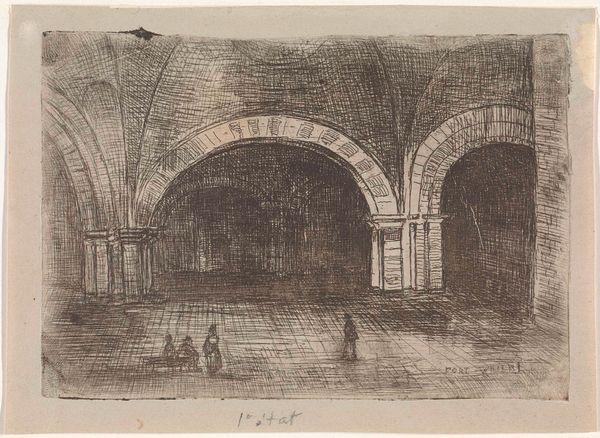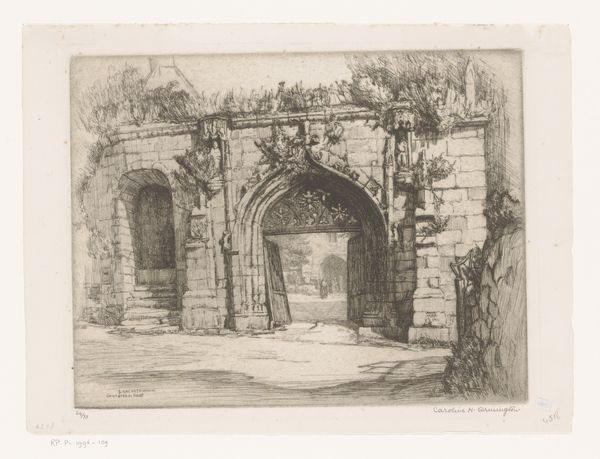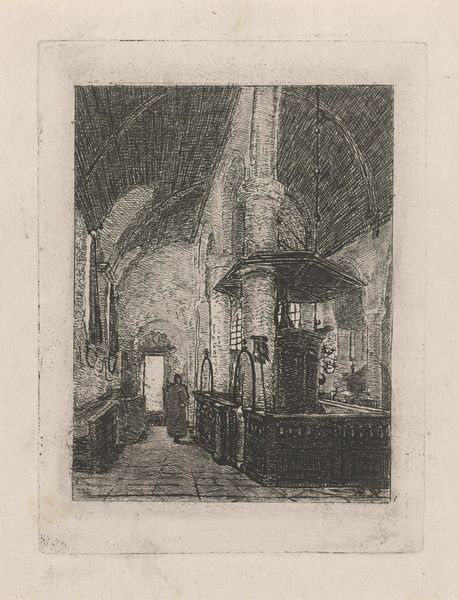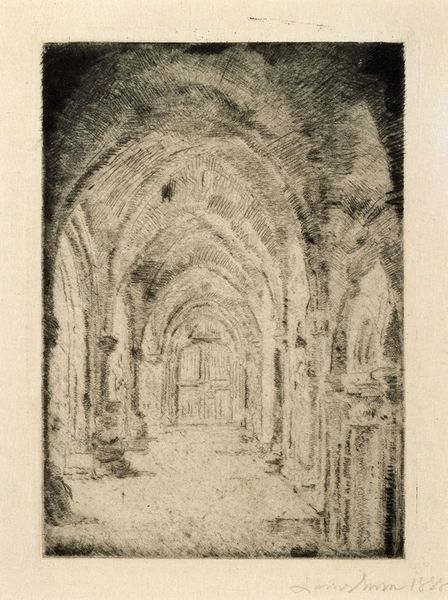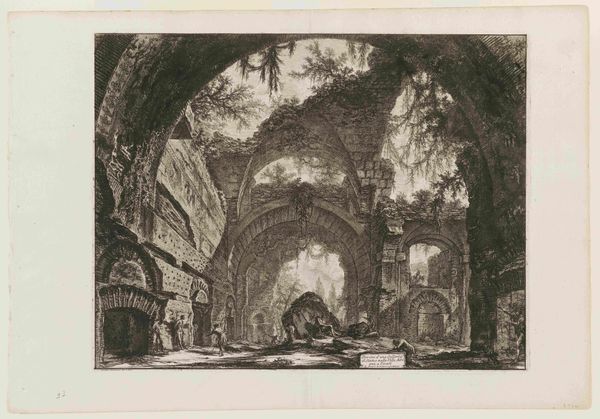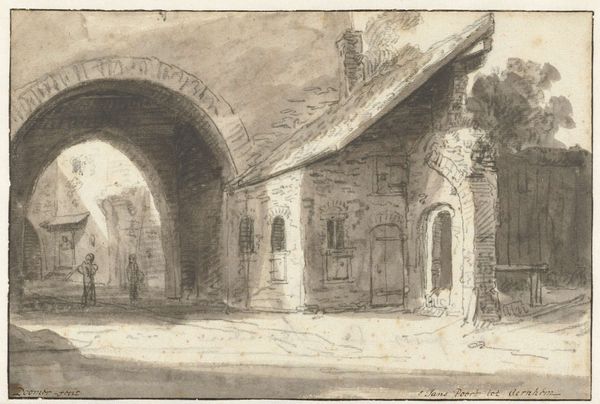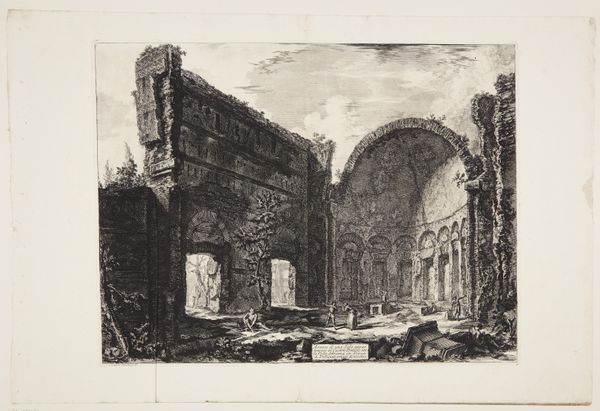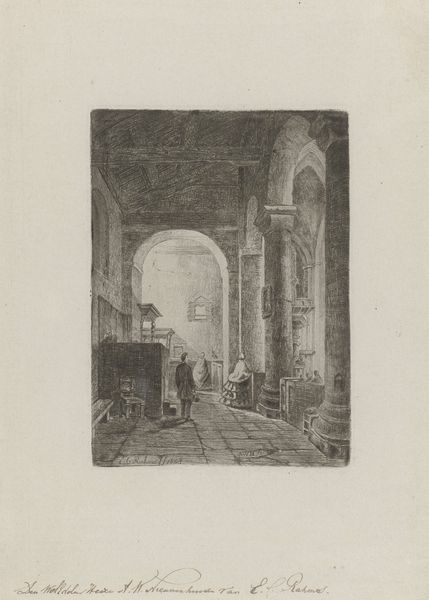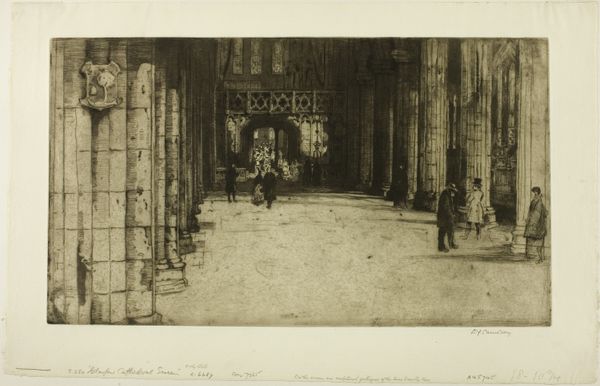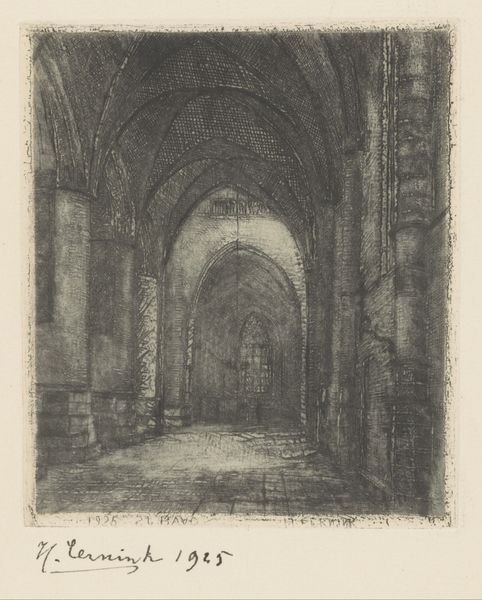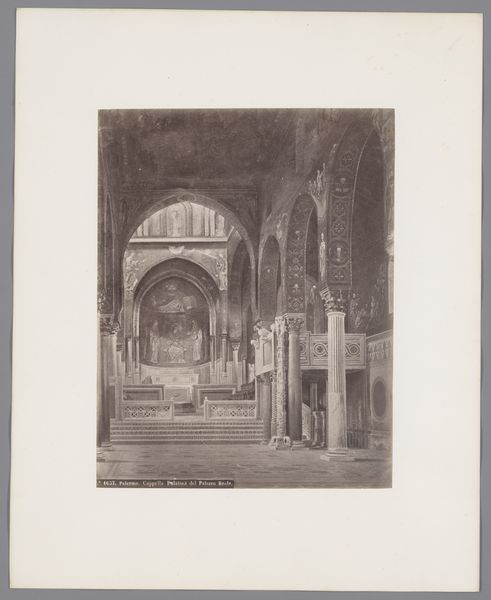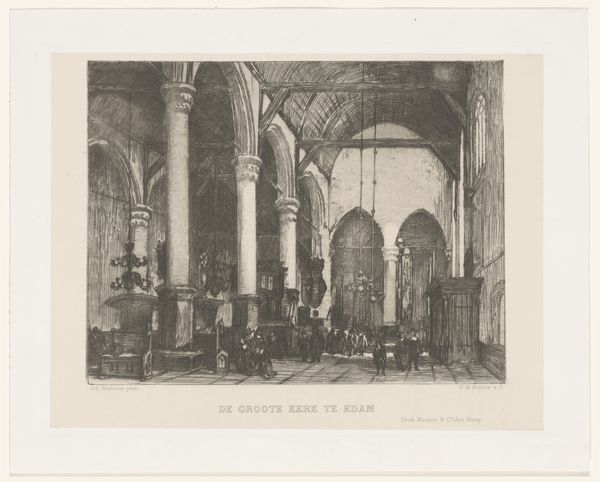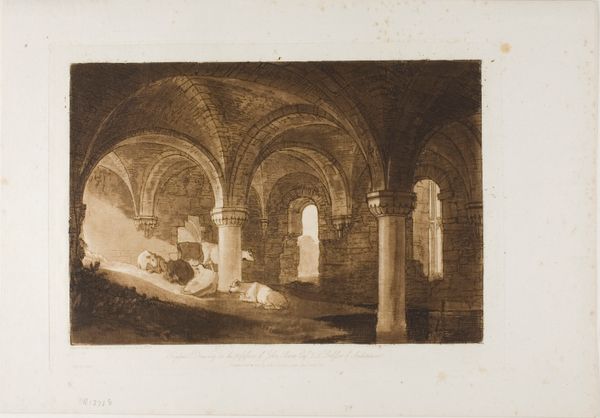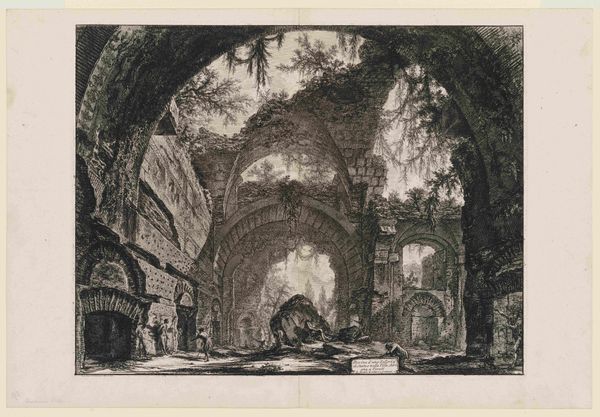
print, etching
etching
old engraving style
landscape
etching
genre-painting
realism
Dimensions: height 107 mm, width 154 mm
Copyright: Rijks Museum: Open Domain
Alexander Schaepkens made this print of Fort Koning Willem I in Maastricht using etching, a printmaking process that relies on acid to eat into a metal plate. The artist would have coated the plate with a waxy, acid-resistant ground, then scratched an image into it with a needle. When immersed in acid, the exposed lines would be bitten, creating grooves. The depth of these grooves determines how much ink they hold, and therefore how dark they appear when printed. Schaepkens has clearly exploited this tonal range, using dense networks of fine lines to create areas of deep shadow, and sparser marks for the highlights on the vaulted ceiling. Consider the labor involved, both in the architecture of the fort itself, and in the careful work of the artist. The controlled, repetitive marks required to make an etching speak to a broader social context of labor, and the systems of production that underpin our built environment and cultural artifacts alike. Paying attention to materials and processes allows us to understand an artwork's full meaning.
Comments
No comments
Be the first to comment and join the conversation on the ultimate creative platform.
